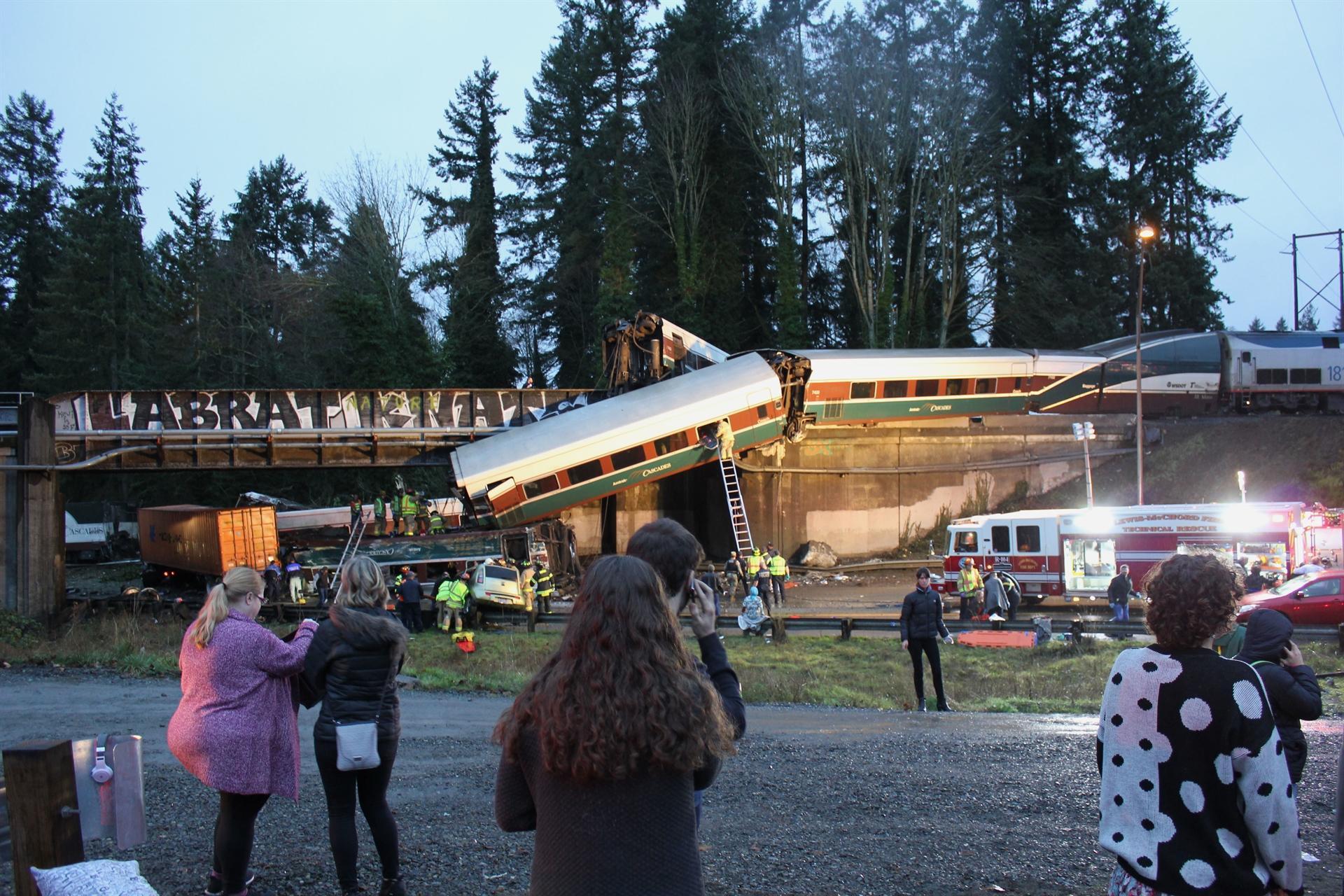
An Amtrak train making the first-ever run along a faster new route hurtled off an overpass south of Seattle on Dec. 18 and spilled some of its cars onto the highway below, killing at least three people, injuring dozens and crushing two vehicles, authorities said.
Attention quickly turned to the train’s speed. Federal investigators say the train was traveling at 80 mph (129 kph) in a 30 mph (48 kph) zone. Bella Dinh-Zarr, an NTSB board member, said at a news conference that information from the event data recorder in the rear locomotive provided information about the train’s speed.
Late on Dec. 18, Dinh-Zarr said it’s not yet known what caused the train to derail and that “it’s too early to tell” why it was going so fast, as reported by The Associated Press.
She said federal investigators will likely be on scene for a week or more.
There were 80 passengers and five on-duty crew on board when the train derailed and pulled 13 cars off the tracks. Authorities said there were three confirmed deaths. More than 70 people were taken for medical care - including 10 with serious injuries.
About two hours after the accident, a U.S. official who was briefed on the investigation said he was told at least six people were killed.
The official said he had no new information to explain the discrepancy in the numbers.
The official was not authorized to discuss the investigation publicly and spoke to The AP on condition of anonymity.
A track chart prepared by the Washington State Department of Transportation shows the maximum speed drops from 79 mph (127 kph) to 30 mph for passenger trains just before the tracks curve to cross Interstate 5, which is where the train went off the tracks.
The chart, dated Feb. 7, 2017, was submitted to the Federal Railroad Administration in anticipation of the start of passenger service along a new bypass route that shaves 10 minutes off the trip between Seattle and Portland.
Kimberly Reason with Sound Transit, the Seattle-area transit agency that owns the tracks, confirmed to the AP that the speed limit at the point where the train derailed is 30 mph (48 kph). Speed signs are posted 2 miles (3 km) before the speed zone changes and just before the speed zone approaching the curve, she said.
Positive train control - the technology that can slow or stop a speeding train - wasn’t in use on this stretch of track, according to Amtrak President Richard Anderson.
He spoke on a conference call with reporters, said he was “deeply saddened by all that has happened today.”
Aleksander Kristiansen, a 24-year-old exchange student at the University of Washington from Copenhagen, was going to Portland to visit the city for the day.
“I was just coming out of the bathroom when the accident happened. My car just started shaking really, really badly,” he said.
The back of his train car was wide open because it had separated from the rest of the train, so he and others were able to jump out to safety. He was at about the middle of the train, either the sixth or seventh car, he said, and was “one of the lucky ones.”
Emma Shafer was headed home to Vancouver, Washington, on winter break from the Cornish College of the Arts in Seattle and was napping when the crash occurred.
She awoke to find her body at a 45-degree angle and her train car dangling from the overpass. Someone behind her was pinned by the legs, she said, and she and others who could walk exited the train by crawling onto a car underneath theirs that had been crushed.
“It felt oddly silent after the actual crashing. There was a lot of metal, a lot of screeching, a lot of being thrown around. It was very quiet. Then there was people screaming,” Shafer said.
“I don’t know if I actually heard the sirens, but they were there. A guy was like, ‘Hey, I’m Robert. We’ll get you out of here.’”
U.S. President Donald Trump said the accident underscored the need to invest in infrastructure.
“Seven trillion dollars spent in the Middle East while our roads, bridges, tunnels, railways (and more) crumble! Not for long!” he tweeted.